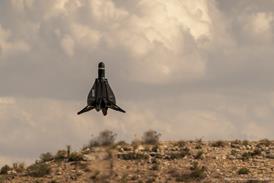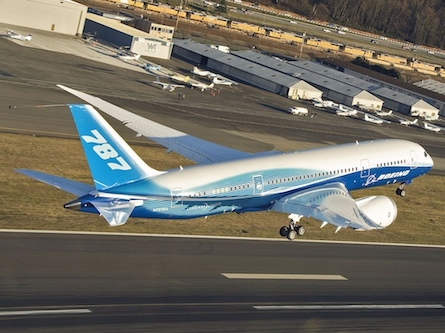One month into its flight test campaign, Boeing has completed initial airworthiness trials on its long-range twin-engine 787.
ZA001 and ZA002, which first flew on 15 December and 22 December, respectively, have accumulated just shy of 60h of flight testing.
The overwhelming majority of initial flight hours during the first month of testing have been flown by ZA001, Boeing's first 787, which has accumulated an estimated 57h and 51min, according to programme tracking by Flightglobal.
"The pilots have told me the results we are seeing in flight match their expectations and the simulations we've run," says Scott Fancher vice president and general manager of the 787 programme.
Boeing says the 787 has reached an altitude of 30,000ft (9,144m) and a speed of MO.65.
The company says that initial stall tests at various centres of gravity and other dynamic manoeuvres have been run, including flight control sweeps, in-flight speedbrake extensions and retractions, tight turns, wind up turns and dutch rolls.
| |
|---|---|
Boeing |
With the initial airworthiness trials now complete, additional flight test crews beyond the current two pilots will be permitted to fly onboard the aircraft ushering in the next phase of testing that will take the aircraft to a speed of MO.85 and 40,000ft altitude. Subsequent testing will push the aircraft beyond expected operational conditions.
Six project pilots have had an opportunity to fly the 787.
ZA002, which is currently undergoing an aqueous wash at the company's Everett, Washington, facility following discovery of foreign object debris (FOD) inside its fuel tanks, is expected to rejoin the flight test fleet once the cleaning is complete.
ZA004, the next aircraft to fly, is expected to make its maiden flight in early February followed by ZA003 later that month.
ZA005 and ZA006, 787s powered by the General Electric GEnx, will join in March and April, respectively.
Boeing has targeted the end of September for first delivery to Japan's All Nippon Airways, but has provided itself an additional three months of margin, officially saying delivery will occur in the fourth quarter of this year.
Source: Air Transport Intelligence news
























